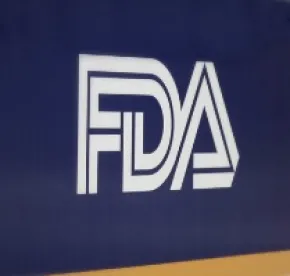On September 23, the U.S. Food and Drug Administration (FDA) published a proposed rule to modify its intended use regulations. In its current form, the regulations have created long-standing confusion as to whether mere knowledge of an unapproved use of an approved product (i.e., off-label) automatically triggers a new “intended use,” for which clearance or approval is required. The proposed rule clarifies that knowledge alone of off-label use would not create a new intended use, but confirms the Agency’s long-standing position that “any relevant source” of evidence (including knowledge) may be used to determine intended use. Comments on the proposed rule are due within 30 days unless FDA grants an extension.
The Preamble Reiterates FDA’s Broad View of Evidence of Intended Use
“Intended use,” as interpreted by FDA under the regulations in 21 C.F.R. §§ 801.4 (devices) and 201.128 (drugs), determines whether a medical device or drug is being marketing for a use that exceeds its clearance or approval (i.e., an “off-label” use). FDA’s long-standing position is that it may use “any relevant source of evidence” to determine a product’s intended use, including direct and circumstantial evidence.
In the preamble to the proposed rule, FDA flatly rejects the position that it may rely exclusively on a firm’s claims (e.g., statements in the product’s labeling, promotional materials, or advertising) to establish intended use. Instead, FDA’s comments (and edits to the rule) reiterate that a variety of evidence, such as the product’s design features or circumstances surrounding its distribution, may be used as evidence of intended use.
Revisions to the Rule
- Knowledge Prong Eliminated from the Rule
Under the proposed rule, the intended use regulations would be amended to clarify how the FDA considers “knowledge” of off-label use when determining a product’s intended use. Accordingly, FDA proposes to delete the last sentences of 21 CFR §§ 201.128 and 801.4, which currently state that if a manufacturer “knows, or has knowledge of facts” that would give notice that the drug or device is being used for off-label purposes, then the manufacturer is required to provide adequate labeling.
The deleted sentence would be replaced with a new clause that knowledge alone would not be evidence of a new intended use:
“… a firm would not be regarded as intending an unapproved new use for an [drug or device] based solely on that firm’s knowledge that such [drug or device] was being prescribed or used by health care providers for such use” (emphasis added).
FDA adds in the preamble that knowledge in the context of “safe harbors” also would not create a new intended use. “Safe harbors” includes activities surrounding the distribution of information on unapproved uses that are described (and therefore expressly permitted) in FDA guidance.[1] By way of example, FDA states that a pharmaceutical firm that tracks sales metrics on its products, and is aware of off-label use in a pediatric population based on the sales data, may distribute clinical practice guidelines recommending the product’s use in pediatric patients, following the recommendations in FDA guidance, without creating a new intended use.
- “Design or Composition” Added To the Rule
The proposed rule adds a clause to the regulations that a product’s “design or composition” may be evidence of intended use. Practically speaking, in the context of medical devices, the rule permits FDA to regulate a medical device based on its technical features, even if no claims are made. In the preamble, FDA provides a few examples in the context of medical devices, such as software designed with a diagnostic function, when its purported use does not include diagnosis, and a suture delivery device with a snare loop sized for a specific procedure, where the device is not cleared for the procedure.
FDA also provides as examples known uses of consumer products and products with “known physiological effects.” For example, in the drug context, a product that contains an active pharmaceutical ingredient—such as coffee containing sildenafil (a drug used to treat erectile dysfunction and pulmonary arterial hypertension)—would be subject to FDA scrutiny, even if the product manufacturer makes no claims about the product.
Preamble Examples – Evidence Not Determinative of Intended Use
The proposed rule provides a non-exhaustive list of types of evidence which, standing alone, would not be determinative of intended use:
-
Dissemination of safety information by a firm to health care providers about an unapproved use to minimize risk to patients;
-
A firm’s official social media account “following” – without commenting on or otherwise endorsing – the social media account of a non-profit entity supporting patients with a condition for which the firm is currently investigating an approved product;
-
An internal document reflecting potential sales for an unapproved use that is widely recognized as the standard of care;
-
Corporate filings or SEC submissions that include required disclosures of development activities or potential or actual sales for an unapproved use; and
-
Clinical trial summary information, provided solely to participants, that includes a conspicuous and prominent statement that the product or use has not been approved, cleared, or licensed by FDA.
While the examples are helpful, companies likely may continue to struggle with internal determinations of compliance, given FDA’s broad view of evidence it can muster to shows intended use.
Next Steps
Industry comments are due by October 23, 2020, unless an extension is granted. Even if no extension is granted, it is unlikely that the rule will be finalized before the upcoming November election, given the time it will take the Agency to review and address public comments to the rule.
A change in administration could bring a different view on the proposed rule, and potentially a more expansive one. At the least, an administration change may pause the rule’s enactment in the short term.
Either way, companies may want to consider submitting comments to the docket within the 30-day deadline.
FOOTNOTES
[1] See, e.g., FDA Guidance for Industry, Distributing Scientific and Medical Publications on Unapproved New Uses — Recommended Practices (Feb. 2014), available at https://www.fda.gov/media/88031/download.




 />i
/>i

